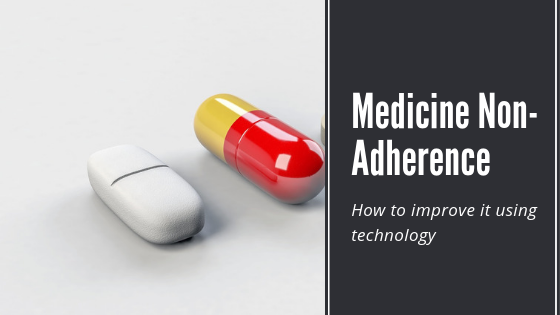Medication adherence is regarded as one of the most crucial elements of treating chronic diseases. Clinicians often face a challenging set of problems with the seniors when it comes to medication adherence and more often than not, they might find themselves at a loss to actually enforce it.
Medication adherence is also affected by a multitude of factors such as the patient’s circle of care, the type of medication, the healthcare system as well as other socioeconomic factors. In order to achieve therapeutic outcomes, it is essential for clinicians to comprehend the issues faced by the senior population in the context of medication adherence
Here are some reasons for medication non-adherence:
- Not believing that treatment is necessary or helpful
- Inability to pay for treatment and medicines
- Confusion about when and how to take the medicine
- Difficulty following multiple medications and complicated dose schedules
What do statistics say about Medication adherence in the United States?
According to the World Health Organization (WHO), medication adherence has a straight influence on the outcome of each patient rather than the treatment itself. It also has a great impact on the quality & length of life, health outcomes, and overall healthcare costs for every patient.
Every year about 25% of hospitalizations, approximately 125,000 deaths, and up to 50% of treatment failures are caused by medication nonadherence. However, it is calculated that the medication adherence rate for chronic diseases is approximately 50%.
Technologies that can improve medication adherence

The aforementioned drug abusive solutions and other technological innovations can improve compliance by monitoring patients, especially when a patient is motivated to take a prescription drug, but it is hard to do it without help.
These technologies can also benefit practitioners who often do not have accurate information about the actual behavior of the patient. Patient-specific medication adherence profiles can help healthcare professionals comprehend why drugs do not work as planned.
Here are some great technologies that can be used to improve medication adherence or non-adherence
Mobile Apps
The common use of smartphones has drastically increased in recent years. At present, 77% of grown-ups in the US own a smartphone, a 35% leap in the smartphone in 2011.
They are relatively cheap, easily accessible, and ready 24 hours a day, 7 days a week, can provide personalized reminders (for applications and renewal), and can serve as a storeroom for medicines and information specific to the user.
The study classified 160 different drug adherence applications, while the other 2016 study identified 272 different medical administrations that give the functionality of drug adherence.
Text-based reminder system
An automatic text-based medication reminder system program can be developed to send text messages to mobile phones. The reliability of this system can be tested by sending a text message to four enrolled four times a day. Healthy enlistees are also asked to access the placebo four times a day with a reminder via SMS and a week without them.
Permanent and casual heart patients were recruited and responsible for taking and registering medications under their own administration for one month with SMS reminders and a month without, the system correctly sent 100% reminder information.
Wearable device
The wearable device technology is on the rise and is greatly stimulated by the development of health and wellbeing, which is expected to reach $ 94 billion by 2024. More features and tools available on these products in collaboration with digital programmers, healthcare providers that can help the clinician to solve the medication adherence problem.
Wearable technology can provide useful information about the days when patients are outside the doctors’ office and can build a direct connection between the physician and the patient.
Smart pill container
The new generation of tablet dispensers is not just automated, it is also linked. I spent some time looking for the best tablet distributor for the venerable and those for general use. They are all connected with patients and careers, some with advanced support for pharmacologists and health professionals through internet portals.
Apart from all the resources, what distinguished them most is their form and ease of use.
Indigestible pill sensor
The Food and Drug Administration has approved the first digital tablet for the United States, which makes it possible to know if patients are taking medication or not and can be a great benefit in fighting medicine nonadherence. An indigestible pill sensor, a pill, is equipped with a tiny sensor that cannot be controlled and communicates with the patient’s patch.
The Patch then transmits the drug information into a smartphone application that the patient can deliberately download to the database for his doctor and other authorized persons. The indigestible pill sensor has a grain size sensor of silicon, copper, and magnesium.
The electrical signal is activated when the sensor comes into contact with the acid – the sensor flows naturally through the body. The patch that the patient carries on the left chest receives the signal a few minutes after taking the pill. The correction then sends data such as taking pills and dosing into the smartphone application via Bluetooth.
So if we use these technologies in a planned manner then we can surely improve medication adherence.




